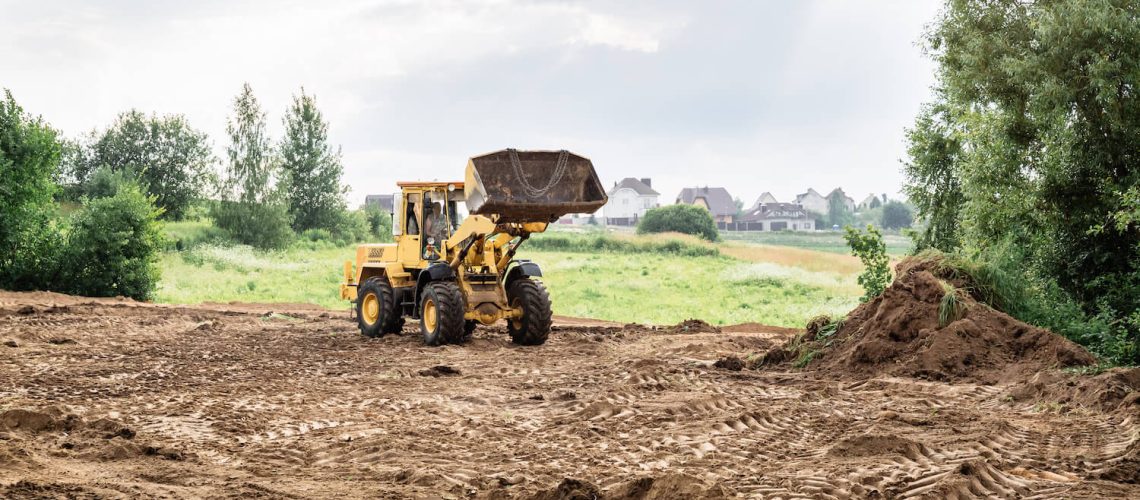The construction industry is a key driver of economic development, shaping skylines and laying the foundations for progress. Behind every towering structure and bustling urban development lies a crucial phase that often goes unnoticed but is fundamental to the entire process – land preparation. Clearing the path for progress involves a series of intricate steps, each playing a pivotal role in ensuring a solid foundation for construction projects. This article delves into the importance of land preparation, exploring the various methods, challenges, and considerations involved in this critical phase of construction.
The Significance of Land Preparation:
Land preparation is the preliminary stage in construction, setting the stage for the subsequent building phases. The significance of this process cannot be overstated, as the quality of land preparation directly impacts the structural integrity, safety, and longevity of the construction project. Several key aspects highlight the importance of effective land preparation:
Foundation Stability Prep
The foundation is the bedrock of any structure, and its stability is paramount for the safety and durability of the entire building. Land preparation involves evaluating the soil composition and taking necessary measures to ensure it can support the intended load. This may include soil testing, compaction, and reinforcement to enhance the foundation’s stability.
Mitigating Environmental Impact
Responsible land preparation involves considering the environmental impact of construction activities. It includes measures to minimize soil erosion, protect nearby water bodies, and preserve existing vegetation. Sustainable land preparation practices contribute to environmental conservation and compliance with regulatory standards.
Optimizing Construction Project Efficiency
Well-prepared land allows for more efficient construction processes. It minimizes the need for extensive excavation, reduces the risk of unexpected challenges during construction, and facilitates smoother project timelines. A thorough understanding of the site’s topography and characteristics is essential for optimizing construction efficiency.
Methods of Land Preparation:
Land preparation involves a combination of surveying, testing, and physical interventions to ready the site for construction. The following methods are commonly employed in this crucial phase:
Project Site Survey and Analysis
A comprehensive site survey is the starting point of land preparation. This involves studying the topography, soil composition, drainage patterns, and any existing structures or features on the site. The information gathered during the survey guides subsequent decisions in the land preparation process.
Soil Testing and Site Analysis
Soil testing is a critical aspect of land preparation, providing insights into the soil’s load-bearing capacity, compaction characteristics, and drainage properties. Different construction projects may require specific soil types, and soil testing helps in determining the need for soil improvement measures such as compaction or stabilization.
Clearing and Grubbing
Clearing involves the removal of vegetation, debris, and any existing structures from the construction site. Grubbing goes a step further by uprooting roots and stumps. This step is essential to create a clean slate for construction and ensures that the site is free from obstacles that could interfere with the building process.
Excavation and Earthmoving
Excavation is the process of removing earth to create the desired levels for construction. Earthmoving equipment such as bulldozers, excavators, and backhoes are employed in this phase. Proper excavation is crucial for achieving the required depth and slope for foundations, basements, and other structural elements.
Compaction
Compaction is the process of mechanically increasing the soil density to enhance its load-bearing capacity. This is particularly important in areas with loose or low-density soils. Compaction ensures that the soil can adequately support the structural loads imposed by the building.
Grading and Leveling
Grading involves shaping the land to achieve a desired slope or elevation. This is crucial for directing water runoff away from the construction site and ensuring proper drainage. Leveling the site creates a uniform surface for construction activities.
Challenges in Land Preparation:
Despite its importance, land preparation is not without challenges. Various factors can complicate the process, requiring careful consideration and expert intervention:
Unforeseen Site Conditions
Hidden challenges, such as unexpected soil conditions or underground obstacles, can emerge during land preparation. These unforeseen conditions may necessitate adjustments to the construction plan and additional measures to address the challenges.
Environmental Regulations
Increasing awareness of environmental conservation has led to more stringent regulations governing construction activities. Compliance with environmental standards may pose challenges, requiring construction projects to incorporate sustainable practices and minimize their ecological footprint.
Site Access and Logistics
The accessibility of the construction site can impact the ease of land preparation. Limited access may restrict the movement of heavy equipment, leading to logistical challenges. Planning for efficient site access is crucial for a smooth land preparation process.
Community and Stakeholder Considerations
Construction projects often coexist with local communities, and their concerns must be taken into account. Noise, dust, and disruption caused by land preparation activities can affect nearby residents. Engaging with the community and addressing their concerns is essential for successful land preparation.
Considerations for Effective Land Preparation:
To navigate the complexities of land preparation successfully, construction professionals must consider various factors throughout the process:
Collaboration and Communication
Effective collaboration among project stakeholders, including architects, engineers, contractors, and environmental experts, is vital for successful land preparation. Open communication ensures that everyone is aligned with the project goals and can address challenges proactively.
Comprehensive Planning
Thorough planning is the cornerstone of effective land preparation. This includes a detailed analysis of site conditions, development of contingency plans for unforeseen challenges, and coordination of activities to optimize efficiency.
Environmental Stewardship
Embracing environmentally friendly practices not only aligns with regulatory requirements but also contributes to long-term sustainability. Implementing erosion control measures, preserving natural habitats, and minimizing the use of harmful chemicals are essential aspects of responsible land preparation.
Safety Protocols
Safety should be a top priority during land preparation. Construction sites are inherently hazardous, with heavy machinery, excavation, and other potential risks. Implementing stringent safety protocols and providing training for workers can prevent accidents and ensure a secure working environment.
Adaptability and Flexibility
The ability to adapt to changing circumstances is crucial in construction. Unforeseen challenges may arise, requiring adjustments to the land preparation strategy. A flexible approach enables construction teams to address issues promptly and maintain project timelines.
Sustainable Practices in Land Preparation
As global concerns about environmental conservation continue to grow, the construction industry is increasingly adopting sustainable practices in land preparation. This includes the implementation of green construction methods, such as using recycled materials, adopting energy-efficient machinery, and incorporating eco-friendly erosion control measures. Sustainable land preparation not only reduces the environmental footprint of construction projects but also aligns with the broader goals of creating more resilient and ecologically responsible urban environments.
Consideration for biodiversity is another aspect gaining traction in land preparation. Preservation of natural habitats within construction sites, the use of native vegetation, and wildlife-friendly design can contribute to maintaining ecological balance. This approach not only enhances the aesthetic appeal of the constructed environment but also fosters a harmonious coexistence between urban development and the natural world.
Conclusion
In conclusion, the journey from groundbreaking to the completion of a construction project involves meticulous planning, cutting-edge technology, and a commitment to sustainability and social responsibility. Land preparation, as the initial phase of this journey, serves as the bedrock upon which the entire structure stands. By embracing advancements in technology, adhering to sustainable practices, and actively engaging with communities, the construction industry can not only clear the path to progress but also pave the way for a future where development harmonizes with the environment and enhances the quality of life for all. As the construction sector continues to evolve, so too will the methods and considerations in land preparation, shaping a built environment that stands as a testament to both human ingenuity and responsible stewardship of the planet.

